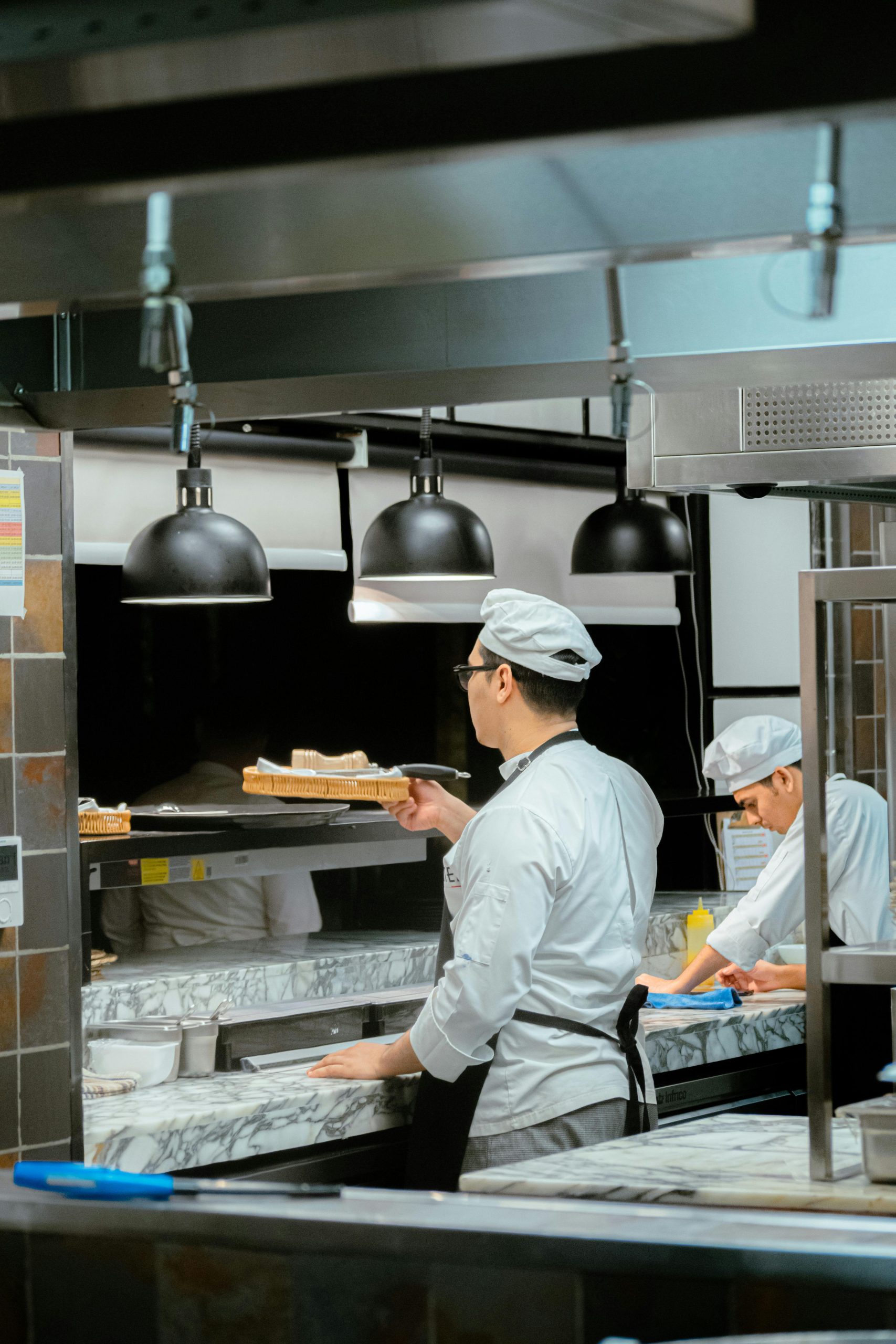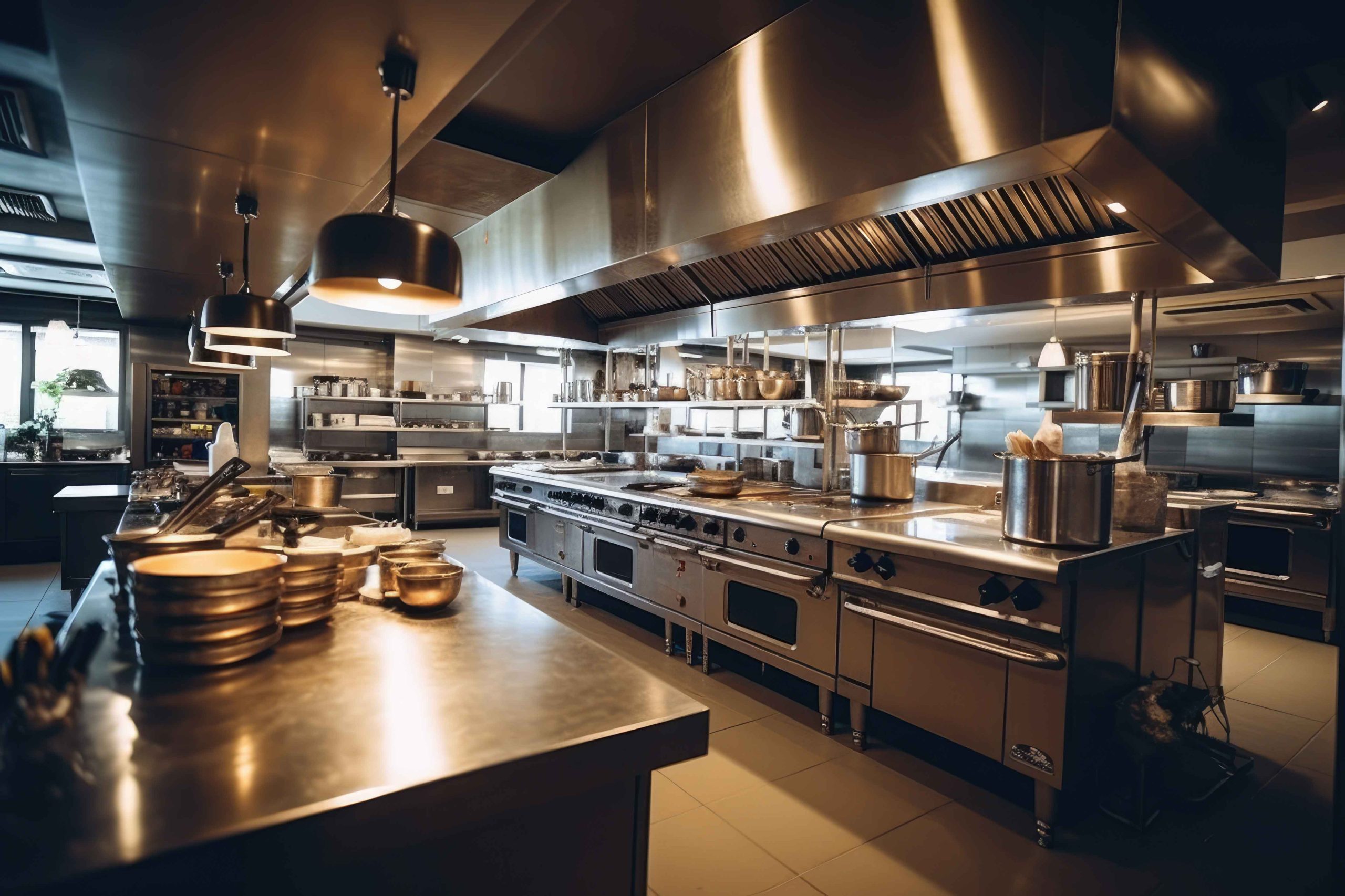Top 10 Tips for Setting Up a Restaurant Kitchen in Mesa
Restaurant Kitchens
Setting up a restaurant kitchen in Mesa is an exciting venture that requires careful planning and execution. Here are our top 10 tips to help you create an efficient, compliant, and cost-effective kitchen space:
Plan Your Layout Efficiently
Invest in High-Quality Equipment
Compliance with Local Regulations
Optimize for Energy Efficiency
Ergonomic Design
Training and Safety Protocols
Flexible Design
Invest in Technology
Storage Solutions
1. Plan Your Layout Efficiently
The layout of your kitchen should facilitate smooth workflow and efficiency. Consider the “kitchen work triangle” concept, which positions the sink, stove, and refrigerator at three points of a triangle for easy access. Ensure ample space for movement and that stations are logically arranged to minimize steps. Learn more about Kitchen design layouts!
2. Invest in High-Quality Equipment
Investing in high-quality equipment is crucial for the success and longevity of your kitchen. Commercial-grade appliances are built to withstand the demands of a busy environment, offering superior performance, durability, and efficiency. High-quality equipment not only ensures that your kitchen operates smoothly and reliably, reducing the likelihood of breakdowns and costly repairs, but it also helps maintain consistent food quality and safety standards. By choosing top-tier equipment, you’re making a long-term investment that supports productivity, minimizes downtime, and enhances the overall customer experience.

3. Compliance with Local Regulations
Compliance with local regulations is essential to ensure your restaurant kitchen operates legally and safely. Adhering to health codes, building codes, and fire safety standards helps avoid costly fines, penalties, and potential shutdowns. Meeting these requirements also protects the health and safety of both your staff and customers, fostering a positive reputation for your business. By staying informed and up to date on local regulations, you can create a kitchen environment that is both efficient and legally compliant.
4. Optimize for Energy Efficiency
Optimizing for energy efficiency helps reduce operating costs and minimize your environmental impact. By investing in energy-efficient equipment and practices, you can lower utility bills, extend the lifespan of appliances, and create a more sustainable kitchen.
5. Storage Solutions
Effective storage solutions are essential for maintaining an organized and efficient kitchen. By utilizing smart shelving, racks, and cabinets, you can maximize space, keep ingredients and tools easily accessible, and reduce clutter, improving workflow and safety.
6. Ergonomic Design
Ergonomic design in the kitchen helps reduce physical strain on staff, improving comfort and efficiency. By incorporating adjustable workstations, proper counter heights, and easy-to-reach storage, you can enhance productivity, reduce the risk of injury, and create a safer, more comfortable working environment.
7. Training and Safety Protocols
Training and safety protocols are vital for maintaining a safe and efficient kitchen. Proper training ensures staff are knowledgeable about equipment use, hygiene practices, and emergency procedures, while clear safety protocols help prevent accidents, reduce risks, and promote a safe working environment for everyone.
8. Flexible Design
A flexible kitchen design allows for easy adaptation to changing needs and workflows. By incorporating movable equipment, modular storage, and versatile spaces, you can quickly adjust the layout to accommodate new menu items, increased volume, or evolving kitchen technologies, ensuring long-term functionality.
9. Invest in Technology
Investing in technology streamlines kitchen operations and enhances efficiency. Tools like inventory management systems, smart cooking equipment, and automated ordering help reduce manual tasks, improve accuracy, and optimize workflows, ultimately saving time and improving overall performance in the kitchen.
10. Sustainable Practices
Implementing sustainable practices in the kitchen reduces waste, lowers energy consumption, and minimizes environmental impact. By using eco-friendly materials, sourcing locally, and adopting waste-reduction strategies like composting, you can create a more sustainable operation while also appealing to environmentally conscious customers.
Veterans
From all of us at Standard Restaurant Supply Mesa, AZ Thank you for your service.2026 November, 11We are proud to serve those who served us.2026 November, 11 Honoring the heroes who served.Proud to serve the finest people in the world; our Veterans.(*valid military ID...
How to Plan an Efficient Restaurant Kitchen in MesaMesa Restaurant Supply Options That Save You Money: Affordable Equipment and Operational Efficiency in Mesa, AZ
Mesa Restaurant Supply Options That Save You Money: Affordable Equipment and Operational Efficiency in Mesa, AZ Durable cooking equipment combines stainless-steel construction, reinforced welds, and modular components to withstand high-volume use without frequent...
7 Reasons Mesa’s Food Lovers Rely on Standard Restaurant Supply
7 Reasons Mesa’s Food Lovers Rely on Standard Restaurant SupplyIn Mesa, kitchens come in all shapes and sizes; bustling restaurants, cozy cafés, food trucks, and homes filled with passionate cooks. Whatever the setup, one place keeps showing up on everyone’s list:...
Elevate Your Home Cooking with Top-Quality Culinary Supplies from Standard Mesa
7 Reasons Mesa’s Food Lovers Rely on Standard Restaurant SupplyIn Mesa, kitchens come in all shapes and sizes—bustling restaurants, cozy cafés, food trucks, and homes filled with passionate cooks. Whatever the setup, one place keeps showing up on everyone’s list:...





